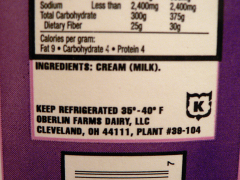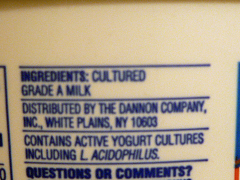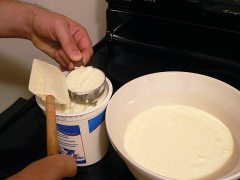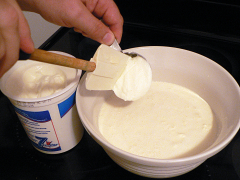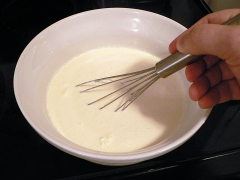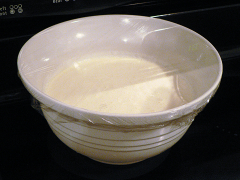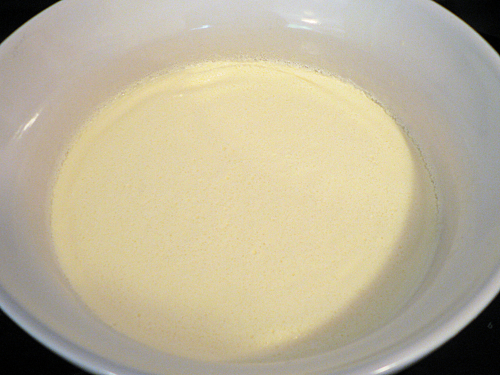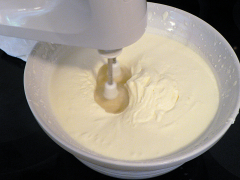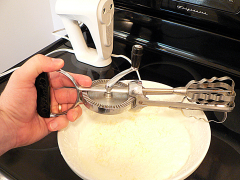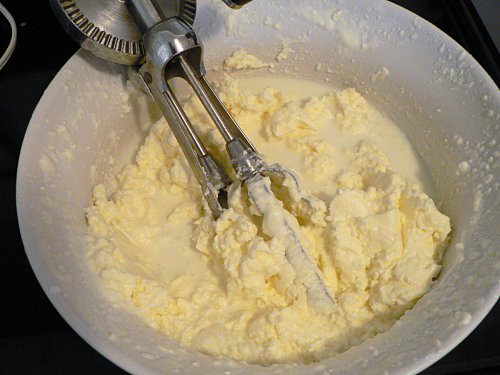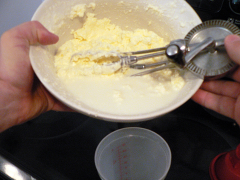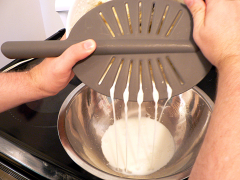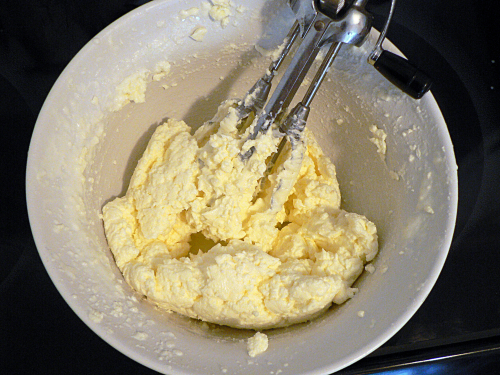Why on earth would you make your own butter? The stuff at the grocery store is already made from nothing but cream, isn’t it? Okay, and salt if you buy salted butter. But that’s pretty good isn’t it?
Because this butter is better. You read that right: better than ordinary butter. Hard to believe, but there you have it.
Okay, it’s not so much better that I won’t use store-bought butter in my cooking and baking. But when I want something to spread on crusty French bread, or on top of warm coffee cake fresh from the oven, I want the best butter you can get. And as of today, this is it.
Ingredients
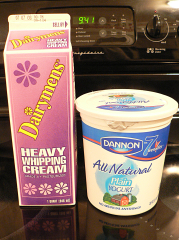
1 quart heavy cream
1/3 cup plain whole-milk yogurt
Directions
Like all my favorite recipes, this one doesn’t have a lot of ingredients. And it’s not terribly sensitive to amounts, so next time I won’t even bother dirtying a measuring cup. I’m lazy that way.
What does make a difference is getting good ingredients. Make sure the cream doesn’t have stabilizers or additives. The ingredients should look like this.
Same for the yogurt. My grocery store has a yogurt section that’s about 40 feet long, floor to ceiling. And only one plain, whole milk selection in the lot.
Pour the cream into a spotlessly clean glass or earthenware bowl. Plastic can hide bacteria in any surface imperfections. After you pour, open the box up and see if you’ve got a bunch of milk solids left, and scrape it all into the bowl.
Add a third of a cup of yogurt.
Whisk gently, by hand — you don’t want to start turning this into whipped cream — then cover the bowl with plastic wrap.
Set the bowl somewhere slightly warm overnight. Somewhere in the mid-70s Fahrenheit is perfect. It needs to be warm enough for the live cultures in the yogurt to grow in the cream. So this is perfect to make in the summer when the house is a bit warmer. It will work if it’s colder, but will take longer.
The next day, give the bowl a light shake. When the cream looks like it has thickened a little bit, it’s ready.
Beat the cream with your mixer until it starts to form peaks, then switch your mixer to its “Low” setting.
If your mixer only has one speed, like mine does, you might need to go a little old school.
Yup, that was in my pantry, right next to the rolling pins, cast-iron pans and potato masher that are all probably older than me. When my wife’s great aunt passed away, while the other relatives asked for the quilts and lace we went to the kitchen. Nobody else even wanted anything. It would have ended up in a garage sale. Unbelievable.
The reason for the low speed is that just after the cream starts to form stiff peaks it will “break.” The milk solids will suddenly separate from the liquid all at once. If you’re still on high speed you’ll spray buttermilk everywhere.
Don’t tell yourself, “Ahh, but I’m expecting it, so I’ll be able to not spray buttermilk everywhere.” You will be wrong. Wrong wrong wrong wrong wrong. Did I mention “wrong?” Look back at that picture above. See the spray around the edge of the bowl? Do you think that spray magically stopped right at the top of the bowl? No, it didn’t. (Take a guess whether I switched mixers before or after the cream broke.)
While holding back the butter, pour out the buttermilk.
Catch yourself about to be stupid again and get a better strainer and a larger bowl.
Ahh, much better. If you’re ready to use it all right away, you’re done.
But probably you’ll want to be able to keep it for a while in the fridge. Press the butter with a spatula or the back of a spoon to squeeze all the buttermilk out. Get as much as you can; you should end up with two cups or more of buttermilk. (Can you say “buttermilk ranch dressing?” I can.)
Now one last step. Rinse the butter with cold water. Keep rinsing until the water runs clear. I know it sounds strange, but it works. And you have to do it or the buttermilk will turn rancid and ruin the butter. Pour off all the water and transfer the butter to a serving dish.
And that’s it.
If you’re the kind of person who slows down to check out accidents on the freeway, you won’t want to miss the next couple of days. I tried a new recipe and a new gadget and it was … disappointing. It was actually pretty close to what I wanted, but I spent way too much time for the payoff.
If you want to offer some suggestions, or just point and laugh, subscribe using the form to the right to get everything as soon as it’s published.
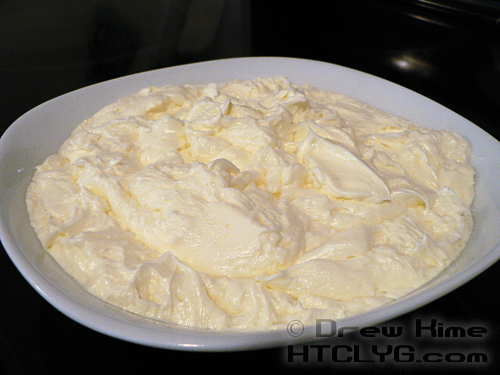
Ingredients
- 1 quart heavy cream
- 1/3 cup plain whole-milk yogurt
Instructions
Pour the cream into a spotlessly clean glass or earthenware bowl. Add the yogurt. Whisk gently, by hand -- you don't want to start turning this into whipped cream -- then cover the bowl with plastic wrap.
Set the bowl somewhere slightly warm overnight. Somewhere in the mid-70s Fahrenheit is perfect. The next day, give the bowl a light shake. When the cream looks like it has thickened a little bit, it's ready.
Beat on low speed until the cream "breaks" and the liquid separates from the milk solids. (It happens abruptly.)
Strain the buttermilk out, and rinse the butter with cold water until it runs clear.
